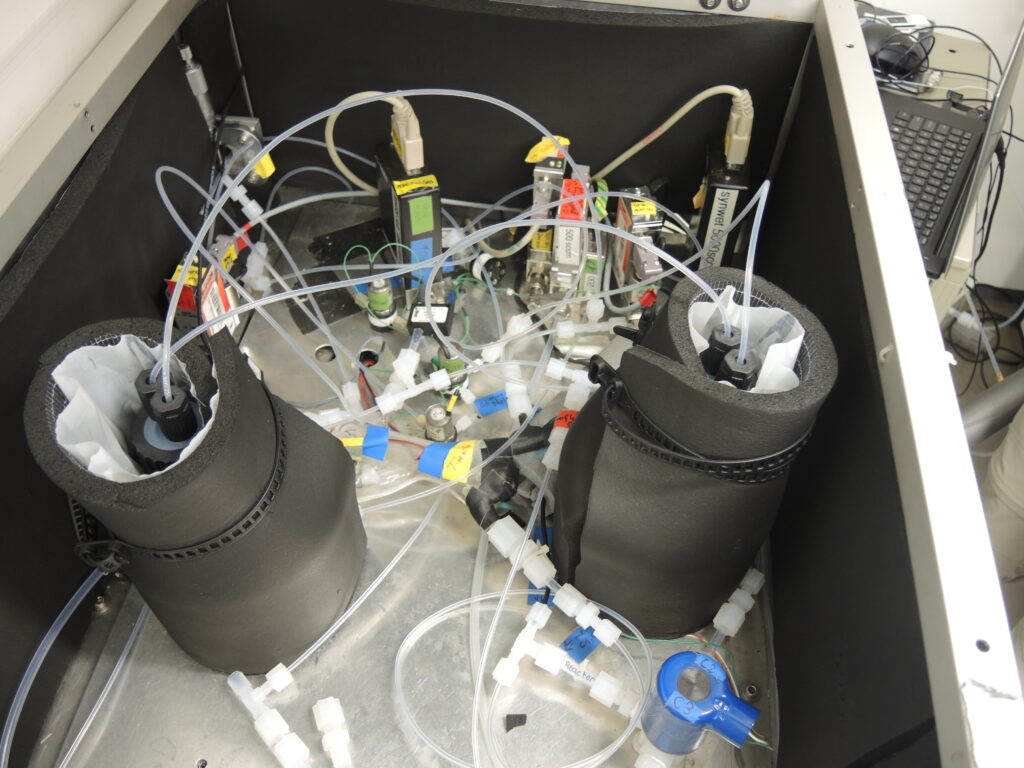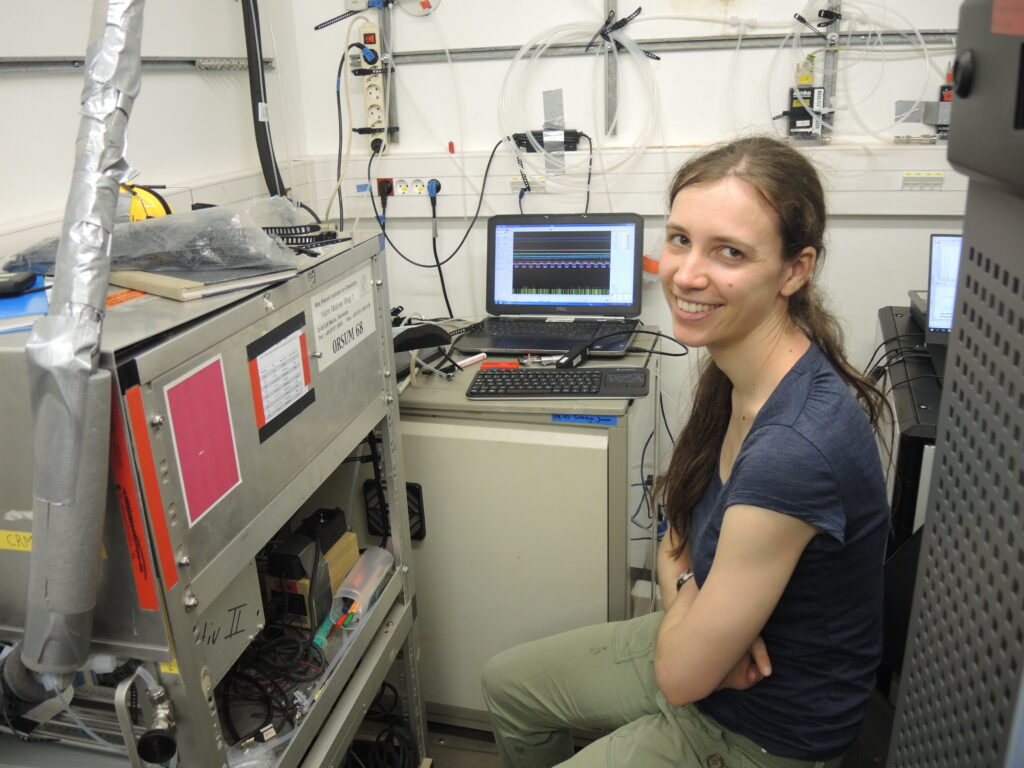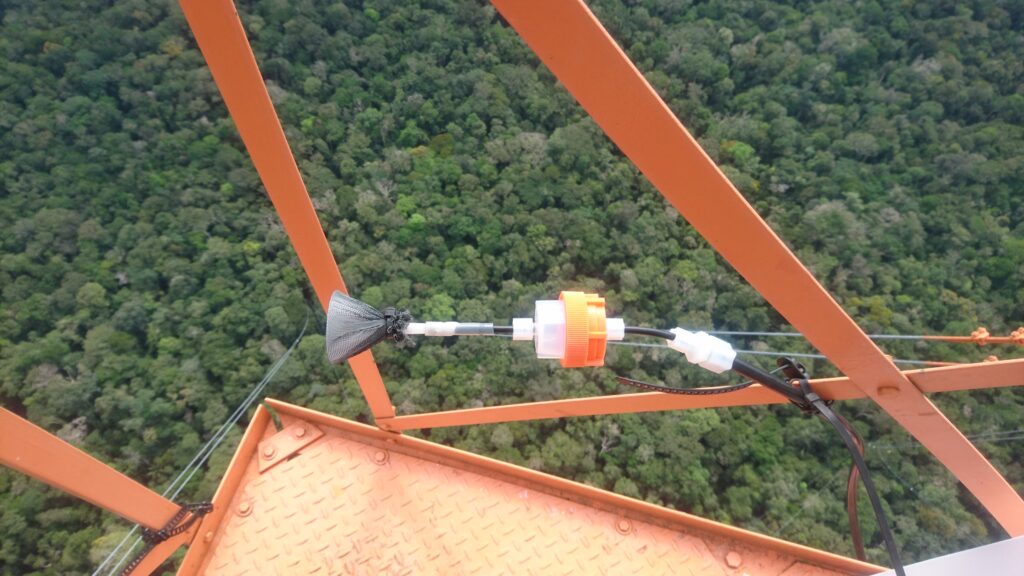How reactive is the air?
When I first opened its lid, I felt like looking at a bowl of Teflon spaghetti: The dozens of thin tubes, valves and mass flow controllers make up a confusing network for gas flows and reactions. The purpose of the Comparative Reactivity instrument is to measure the so-called total OH reactivity. The OH reactivity tells us how much hydroxyl (OH) radicals are lost per unit of time in ambient air. That means the OH radicals react with other chemicals and form different compounds. And what they will react with most in the troposphere is reactive trace gases like the thousands of different fragrances emitted by plants (e.g. terpenes). Therefore, OH reactivity is a measure of how much reactive trace gases are present. Additionally, it tells us something about how efficiently ozone and particles can be formed, or how quickly greenhouse gases such as methane can be removed from the atmosphere.
The heart of the CRM (short for Comparative Reactivity Method) instrument is a hand-sized glass reactor in which artificially produces OH radicals. These radicals are mixed with a standard gas and with ambient air, which we continuously pump into the reactor. We then compare the known reactivity of the standard gas to the reactivity of the ambient air. Colleagues of mine developed this method at the Max Planck Institute for Chemistry in Mainz. The Comparative Reactivity instrument at ATTO is only the second one that was custom-built at the MPIC.
Tough start
My name is Eva Pfannerstill, and worked as PhD student and a PostDoc at the MPI-C in Mainz. I studied OH reactivity in different environments, including the Amazon rainforest. When I first came to the ATTO site in 2016, the CRM had been installed in a lab container at the foot of the 80 m tower for four years. I knew from the person who had last used it in 2015 that several parts of it were not working properly. My first goal was therefore to repair and update it, including its absolutely essential electronic control system. This is responsible for switching valves and gas flows at the right times, and recording reaction conditions such as temperature and pressure.
I wanted to disassemble this control unit at a table in the camp instead of on the floor of the packed lab container. Before unscrewing it from the instrument rack in the lab container and carrying it to the camp, I tried whether it would turn on. It did. Upon arrival at the camp with it, I tried to switch it on once again. This time it was completely dead. After a moment of panic, I realized that a tiny fuse had gone missing. My first thought was “Sh–, I must have lost it somewhere along the 20-minute forest walk between the lab container and the camp”. I didn’t have any spare fuses. I started imagining how I wouldn’t be able to do anything for the remaining three weeks of my stay because I had been too stupid to wrap something around the unit when carrying it through the jungle…
To my immense relief, I found the missing fuse on the boardwalk the next morning.
The fatal transport of the instrument control unit through the forest to repair it at the camp. © Achim Edtbauer / MPI-C
Successful conclusion
The instrument does not stand alone but has to be complemented by a detector. This detector observes the concentrations of the standard gas, which change according to the reactions of the ambient air in the reactor. The detector instrument, a PTR-MS (proton transfer reaction mass spectrometer), can be a challenging diva on its own. My colleagues nicknamed it “Tartaruga junior”, Tartaruga being the Portuguese word for turtle. Because of Tartaruga junior’s advanced age, it is starting to decay, so every now and then, one part or other breaks. I am glad that with several enormous boxes of spare parts, hours of searching for the right one of them in the ATTO storage container, and the support of my colleague Achim Edtbauer we were always able to get the PTR-MS running again.
Nevertheless, my main concern was always with the CRM. It needs lots of attention and careful characterization and can therefore not run unsupervised for long.
The days and weeks I invested during my first few stays at ATTO into updating and automating the CRM paid off later. The following campaigns were much less stressful for me because the instrument was now running more reliably. The necessity for manual interventions was reduced to a minimum. So, the days that I arrived late for dinner in the ATTO camp because I was busy with the CRM became much less frequent, although Murphy’s law still applies…
In 2018, the CRM moved to container A3 at the foot of the ATTO tall tower. There, it is since connected to an inlet system that draws air from 80, 150 and 320 m height, built by Matthias Sörgel, Stefan Wolff, and Anywhere Tsokankunku. The first four campaigns at the tall tower resulted in a nice multi-seasonal OH reactivity dataset (currently under review as part of an ACP Discussions paper). While my love-hate relationship with the CRM has now come to an end, my colleague Nina Reijrink is taking over to measure OH reactivity during the upcoming CAFE-BRAZIL campaign, if the pandemic permits.




